The seventh CREW fieldtrip for the 2013/2014 season was held at Sitamani in Boston. A beautiful patch of grassland which Christeen and Phillip Grant have looked after for the past 22 years – ensuring there have been no cattle grazing and trampling the plants. Christeen compiled this report which includes photos by Christeen, Peter Warren, Nkululeko Mdladla and Nikki Brighton.
What a stunning flower filled day with plenty of sunshine! 13 enthusiastic people accompanied by Tigger our 19 year old cat, visited our wild flower ‘garden’, Sitamani.
Jenny Myhill kindly gave Tigger a lift when the grass got very long!
Some lovely new finds including two orchids. Habenaria lithophila, final identification was due to the three lower petal lobes, which are long and very slender.
Disa patula, which at first glance looked like a stunted, late flowering Satyrium longicauda, had us puzzled.
Jocelyn Sutherland spotted the distinctive ‘pixie cap’ which led to deeper investigation.
The next ground orchid seen was Eulophia tenella, the buds just about to open.
Linum thunbergii, a shining, tiny yellow flower with round petals and reddish buds, was the third ‘new’ flower find.
The final new identification was a small tree, Rock Crowned-Medlar, Pachystigma macrocalyx.
According to the Pooley’s field guide, it is a small tree up to 4m, found in rocky outcrops in grassland. The leaves are quite thick and densely hairy.
In the rocks beneath it, growing quite profusely was a mystery flower. We do love a mystery flower! Please can anyone can help with an ID?
Although the other flowers had been seen before, they kept us mesmerized, and looking further in the grass and photographing everything we came across.
There was an abundance of Killickia pilosa, (old name Satureja reptans thanks to Peter Warren for the new name), sending a waft of fresh mint as we walked over them. We all sampled the delicious mint tasting leaves, laughingly calling them San sweets!
Amongst others these were the flowers / seedheads we found: Aloe boylei seedheads,
Berkheya rhapontica,
Crassula alba
which, despite it’s name, comes in yellow and red too!
and the dainty little Crassula brachypetala,
Epilobium capense,
the very spotty Gladiolus ecklonii
& Gladiolus sericeovillosus seedheads,
Helichrysum rugulosum,
Hermannia woodii, (we all adore the dainty bell flowers on this plant)
Hypericum lalandii,
Kniphofia laxiflora in both yellow and orange forms,
Leonotis intermedia,
Indigofera hedyantha,
the graceful Polygala hottetotta.
We scrambled up the rocks to photograph Printzia pyrifolia,
Rhynchosia adenodes, (used in traditional medicine to treat dysentery in calves)
Schizocarpus nervosa seeds (used to be called Scilla nervosa)
Schizoglossum bidens,
Sebaea sedoides,
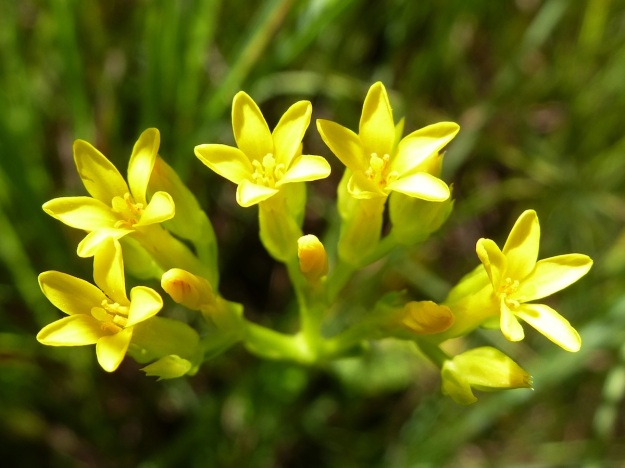 Always interesting to find tiny invertebrates (often the pollinators) in the flowers – like this crab spider on the Sebaea sedoides
Always interesting to find tiny invertebrates (often the pollinators) in the flowers – like this crab spider on the Sebaea sedoides
and this Gaudy Commodore butterfly (summer form) perched on the inflorescence of Kniphofia buchananii.
Striga bilabiata – a parasitic plant known as Small Witchweed
beautiful stands of Watsonia densiflora which have been particularly spectacular this year.
Zaluzianskya microsiphon (Short tubed Drumsticks)
and Zornia capensis.
The final list of plants recorded for the day was over 50. The Durban Bot Soc members who joined us were pleased they made the effort to explore some of the special Midlands mist-belt grassland.
Nkululeko Mdladla filmed the action, so watch out for the CREW movie coming soon!
Interested in joining the CREW (Custodians of Rare and Endangered Wildflowers)? – email info@midlandsconservancies.org.za Next outings 5 March to Blinkwater (contact Suvarna 082 354 5649 and 21 March to Mbona Estate in Karkloof. During Autumn, we will host a workshop on plant collecting and pressing in Fort Nottingham.
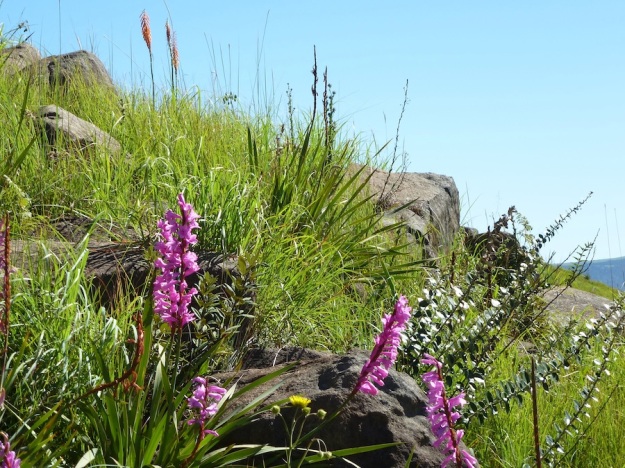
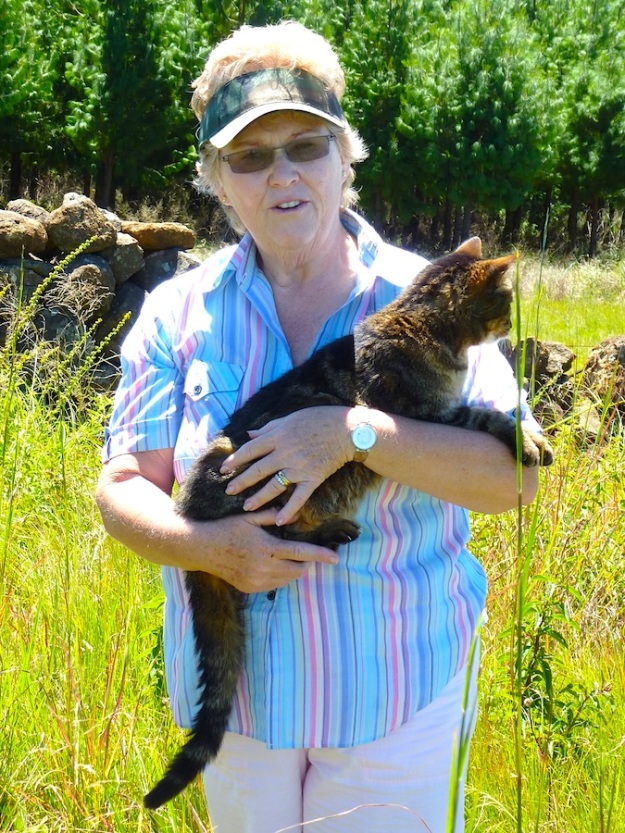

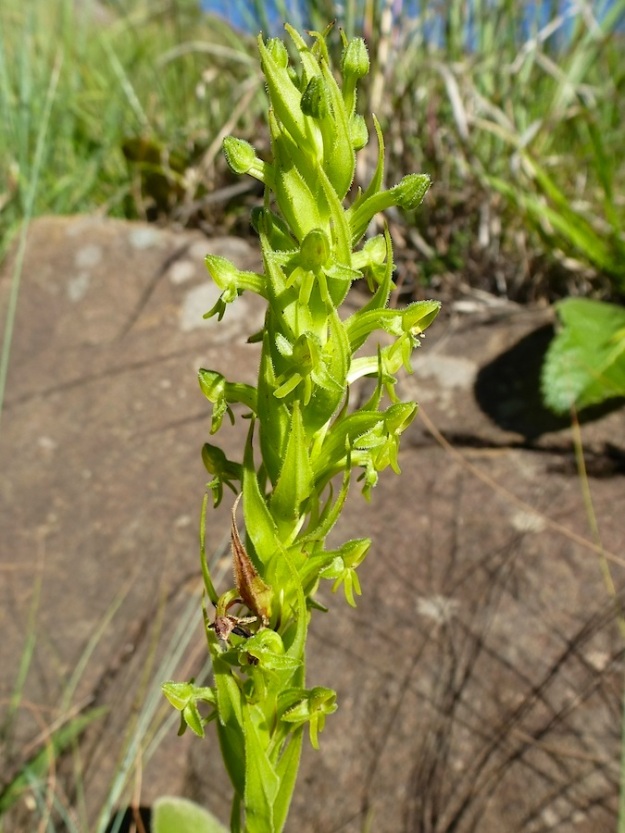
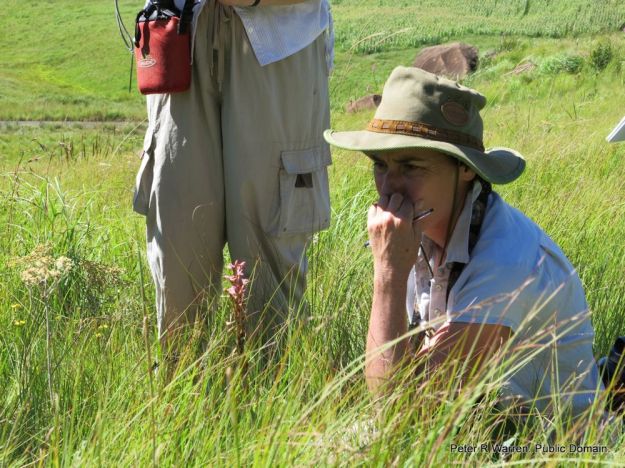
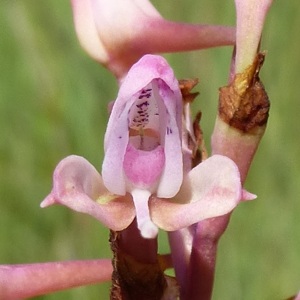
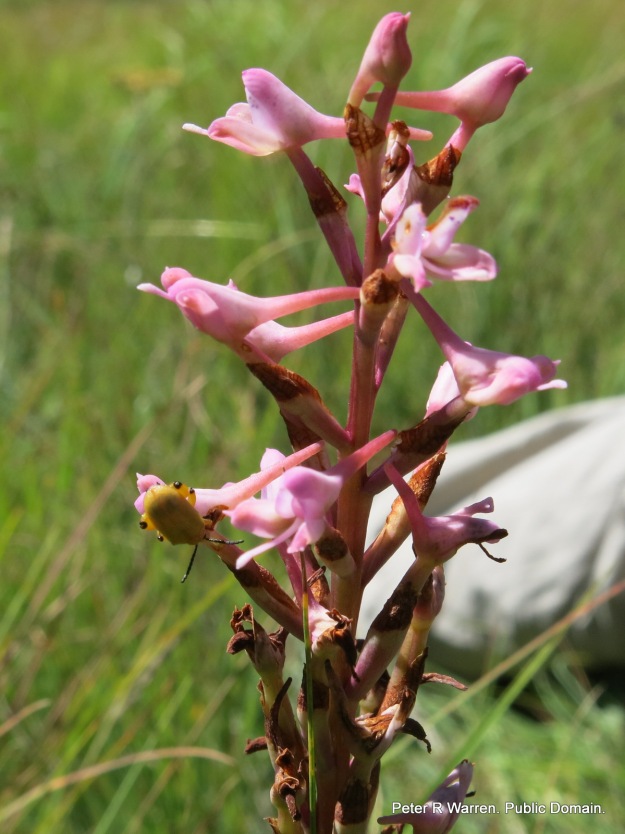

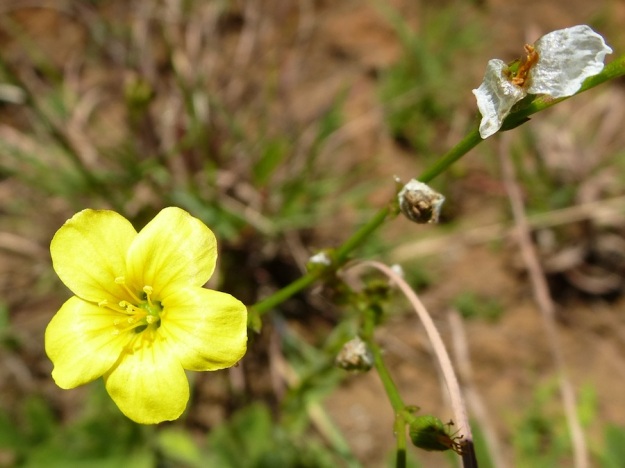
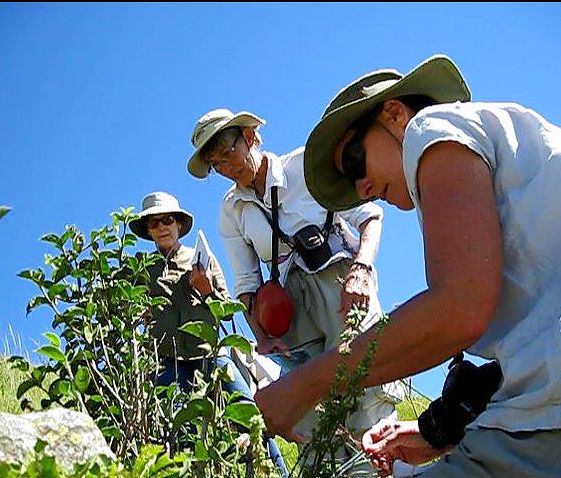
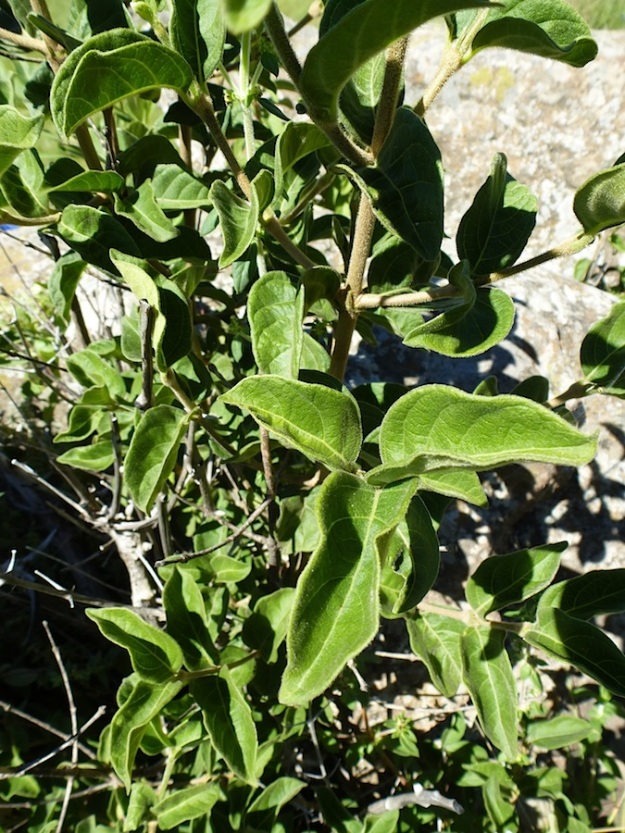
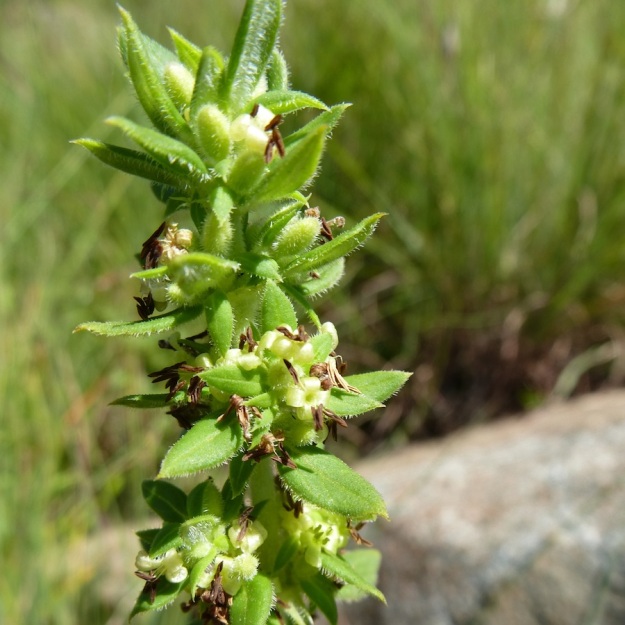
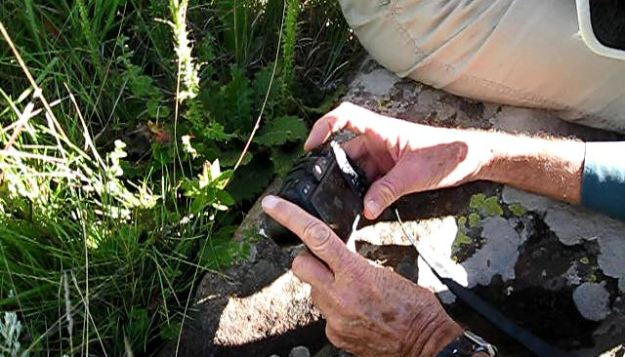
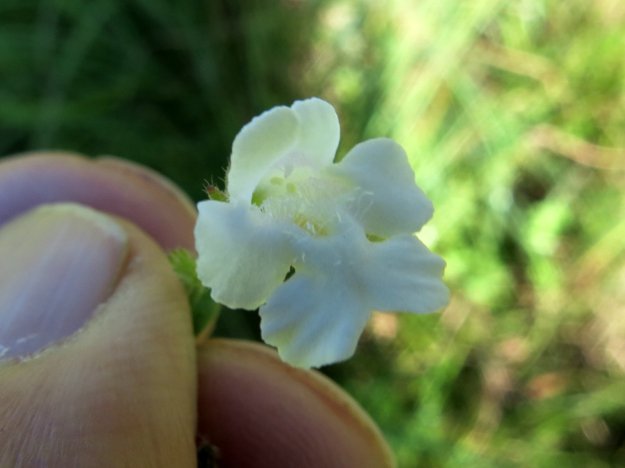
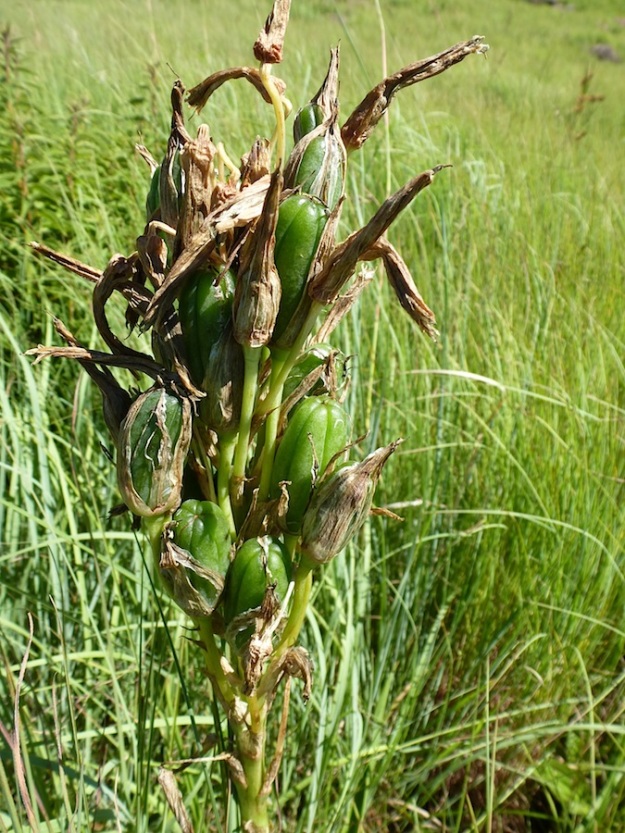
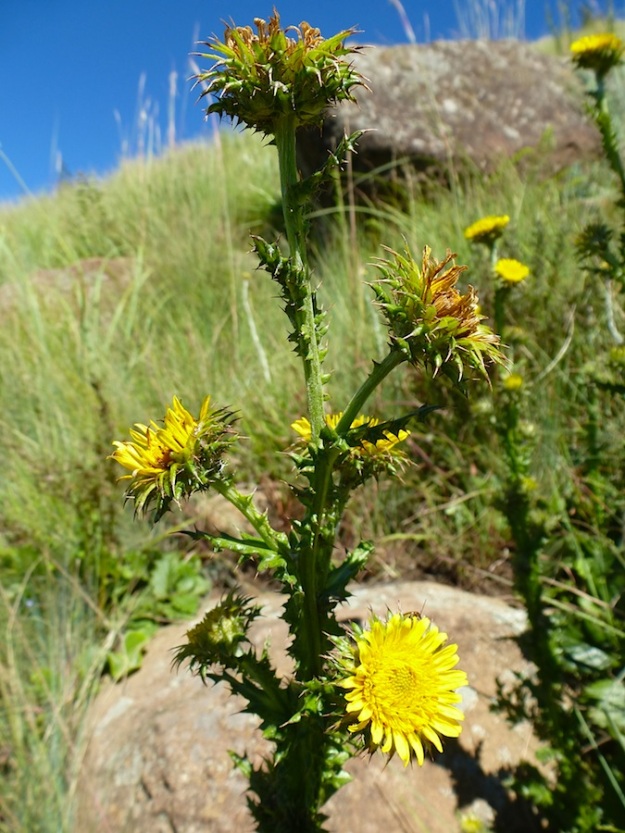

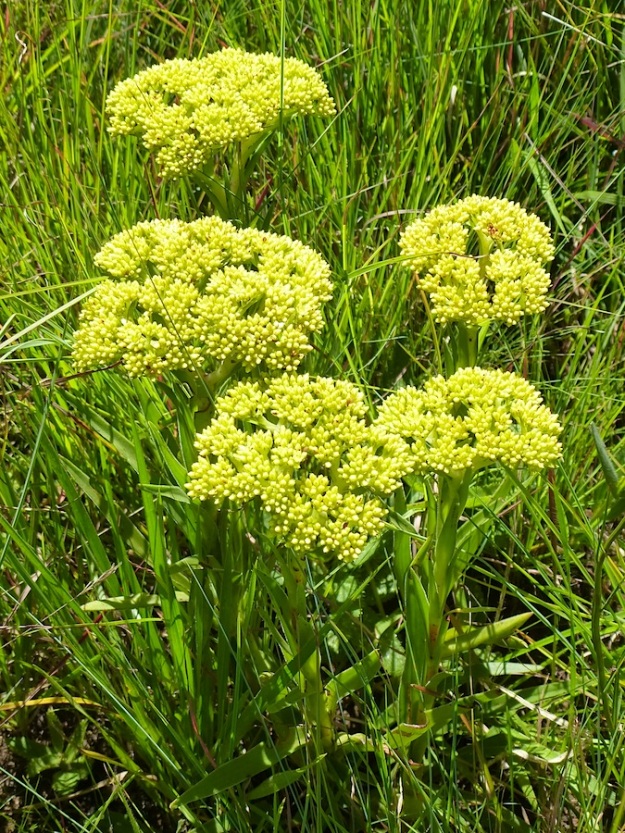
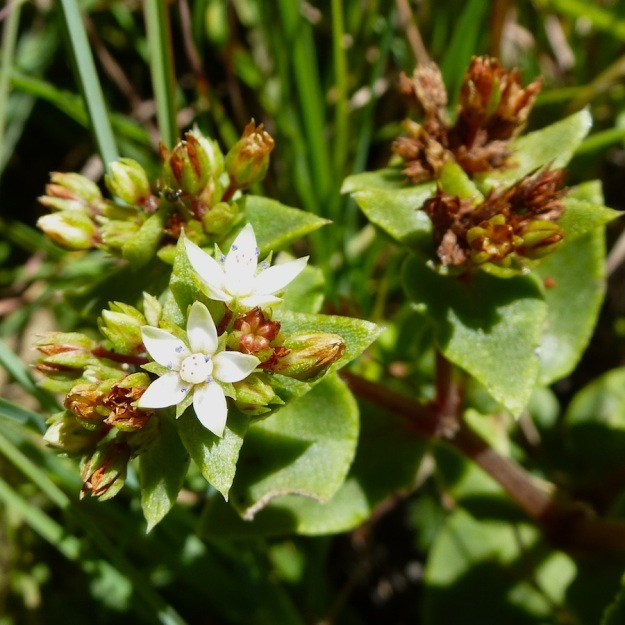
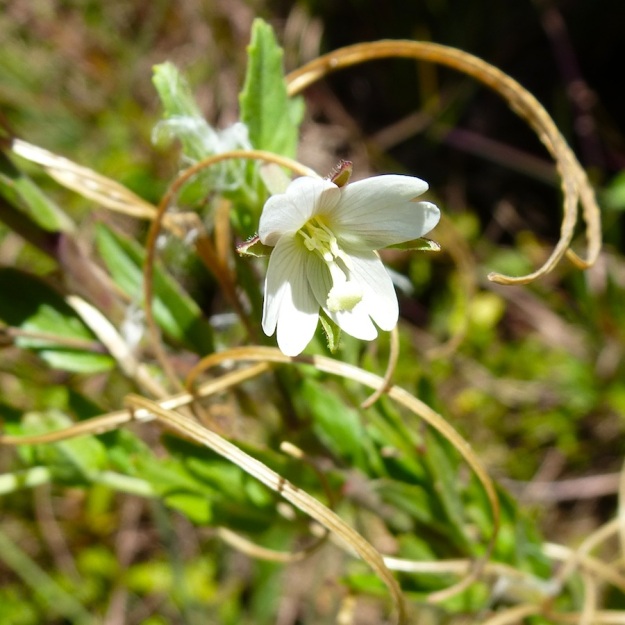
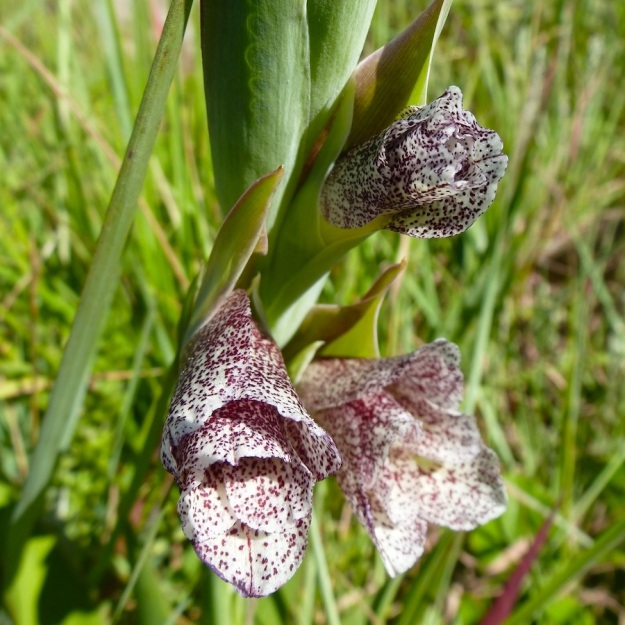

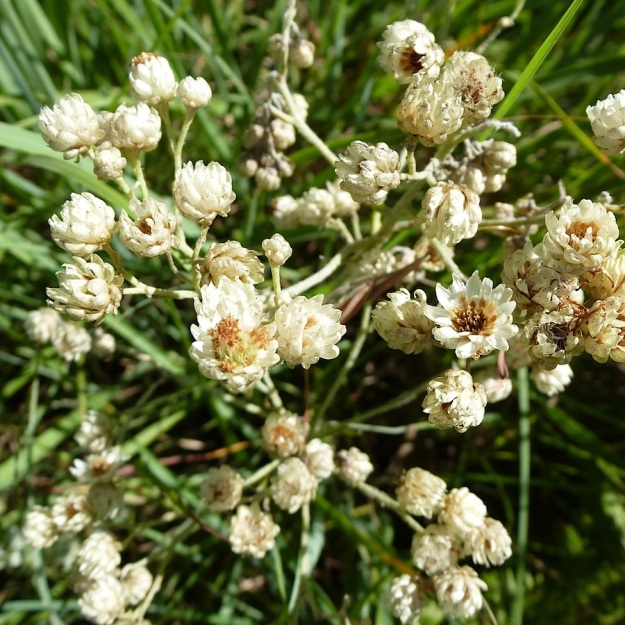

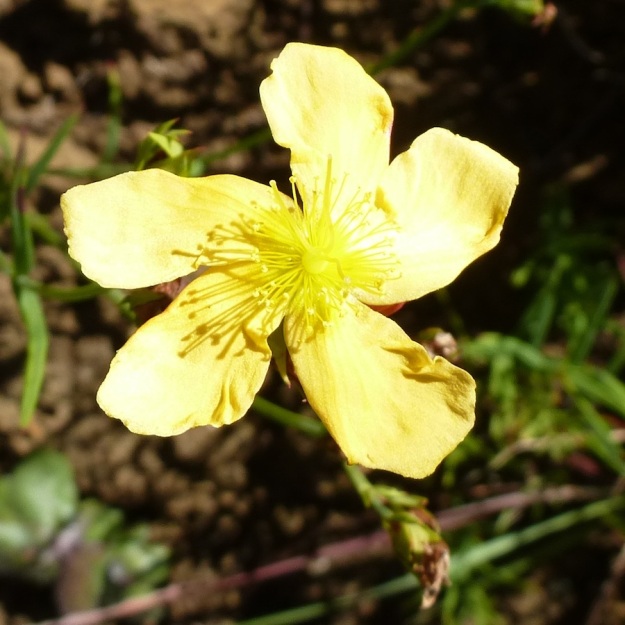
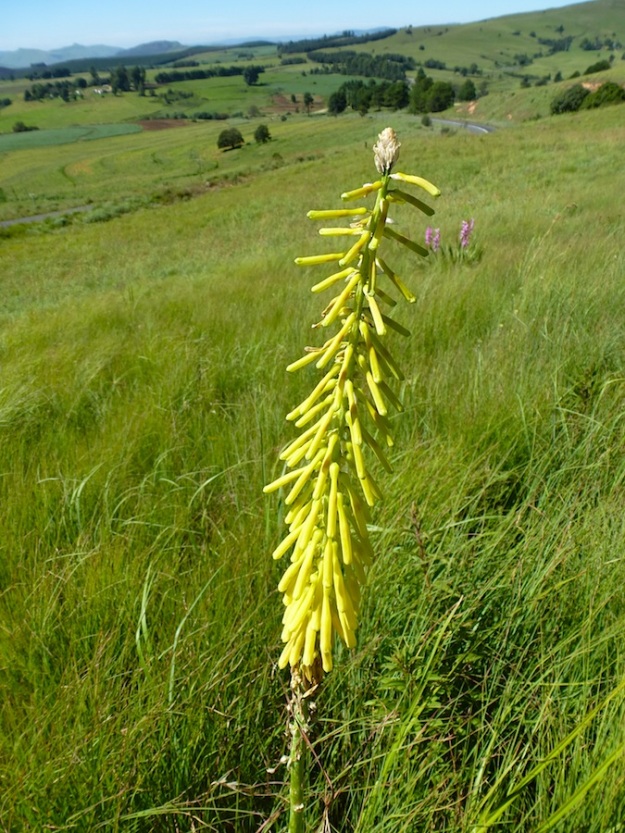

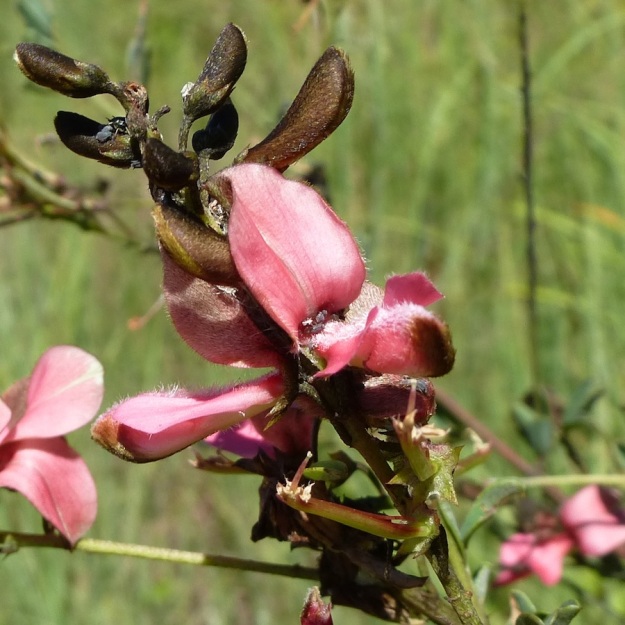
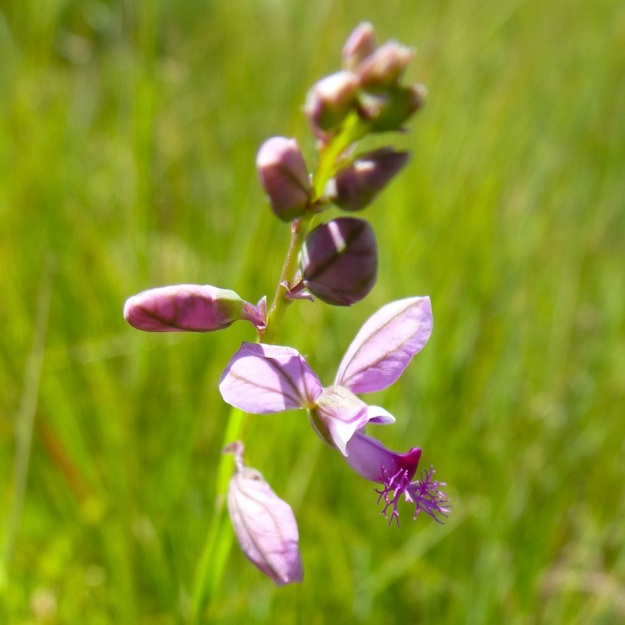
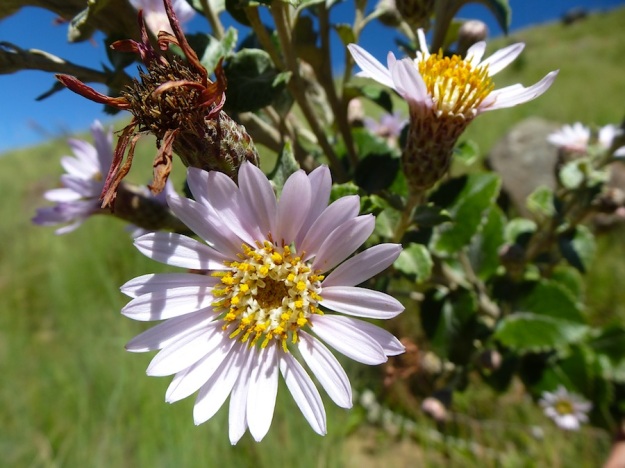

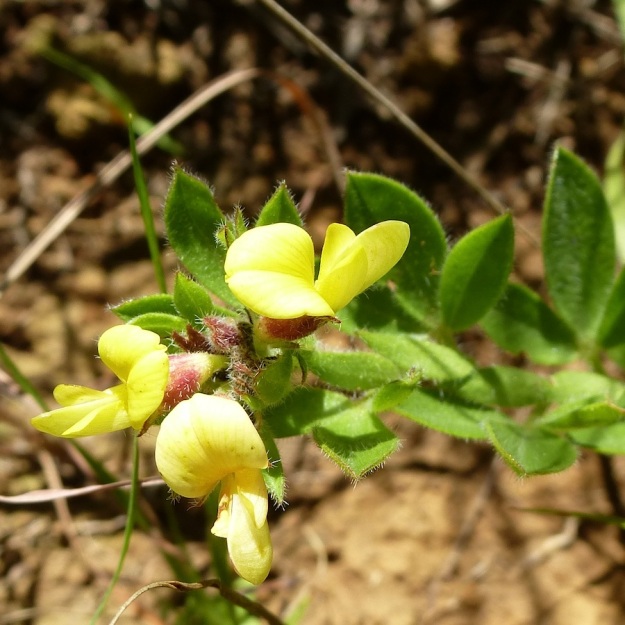

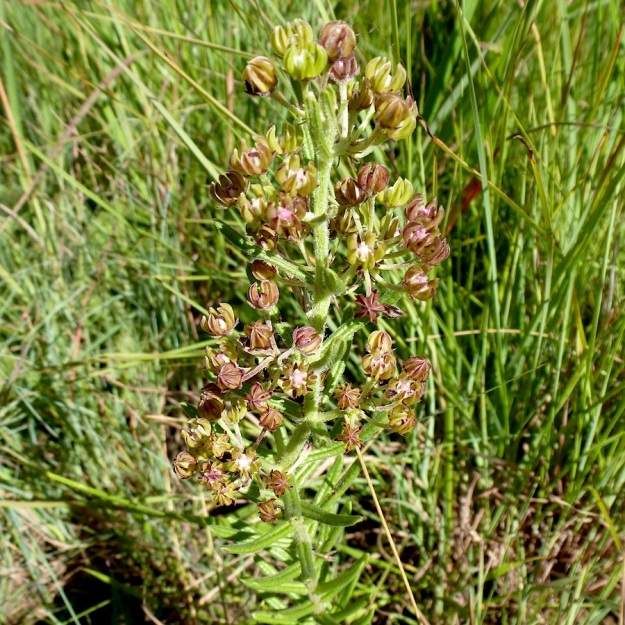
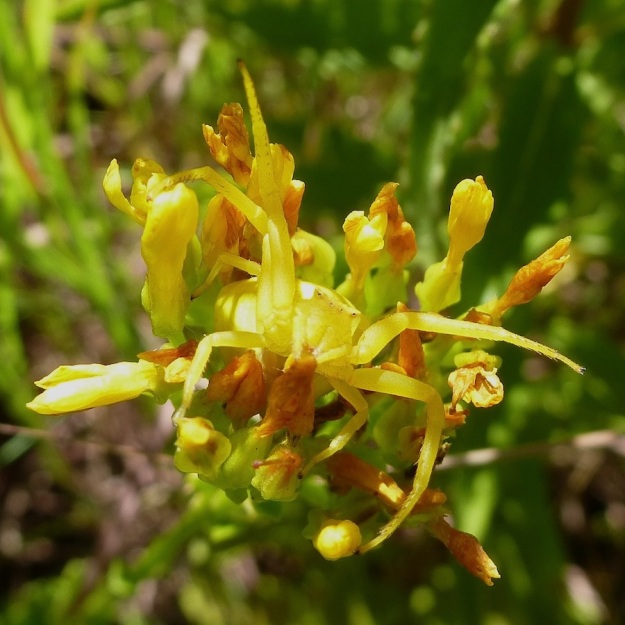
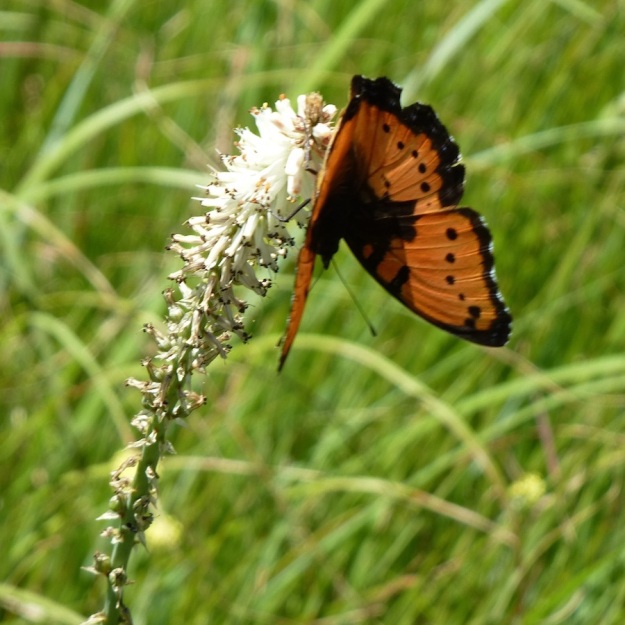
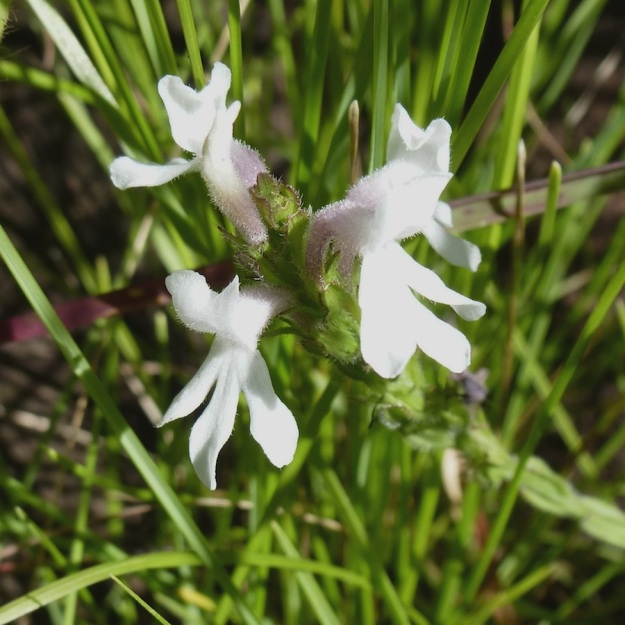
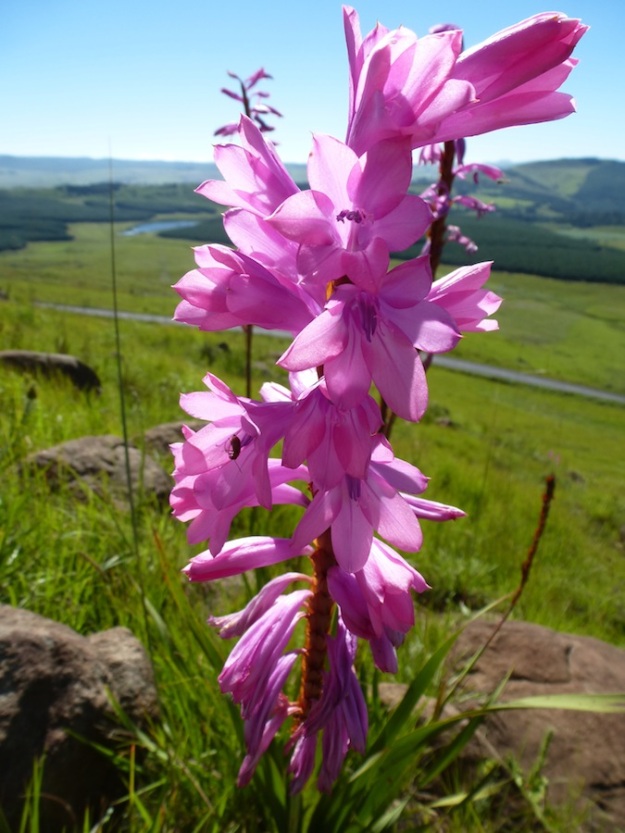
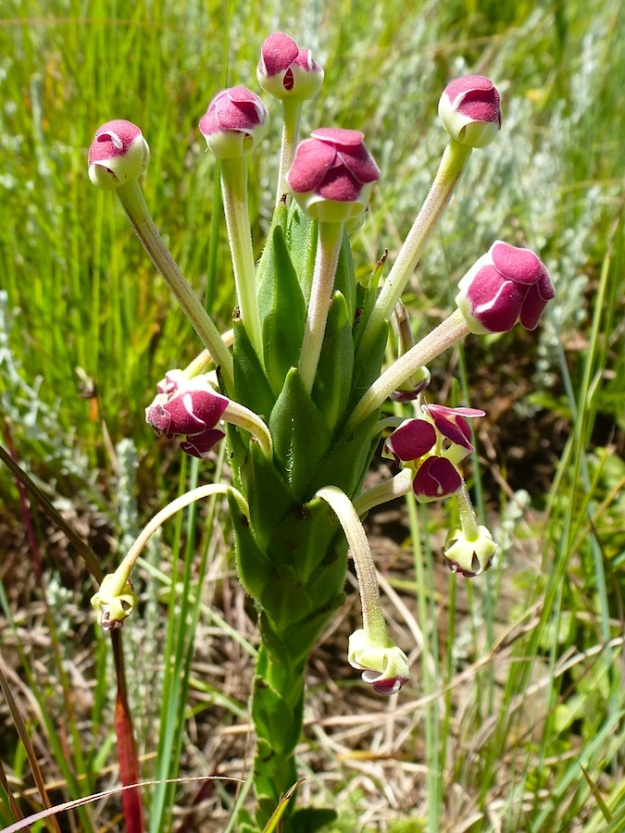
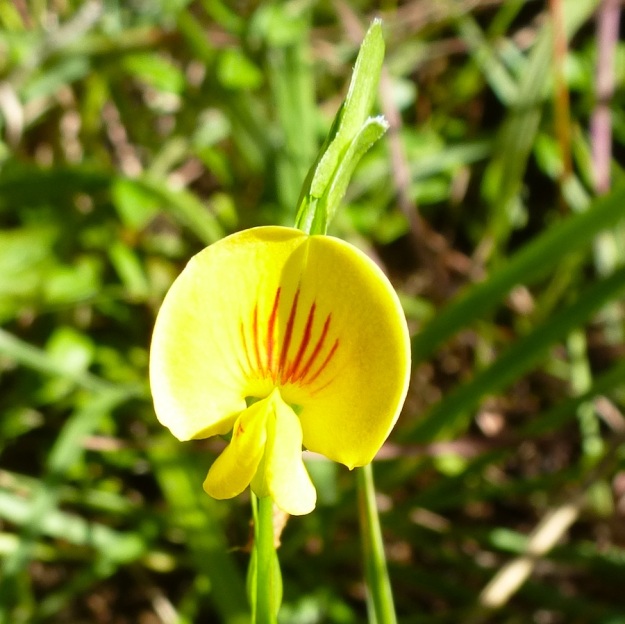
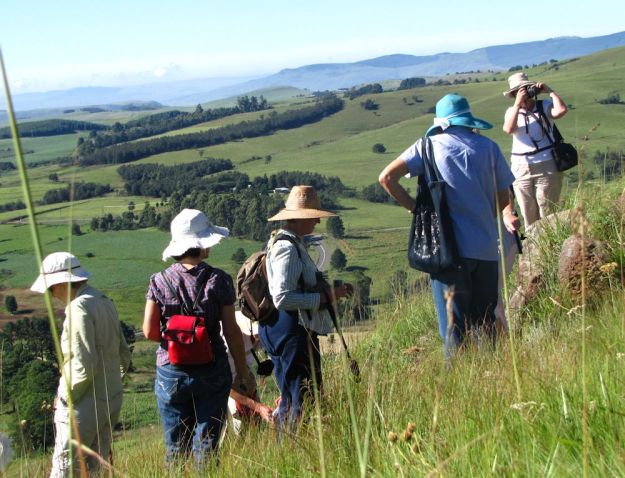
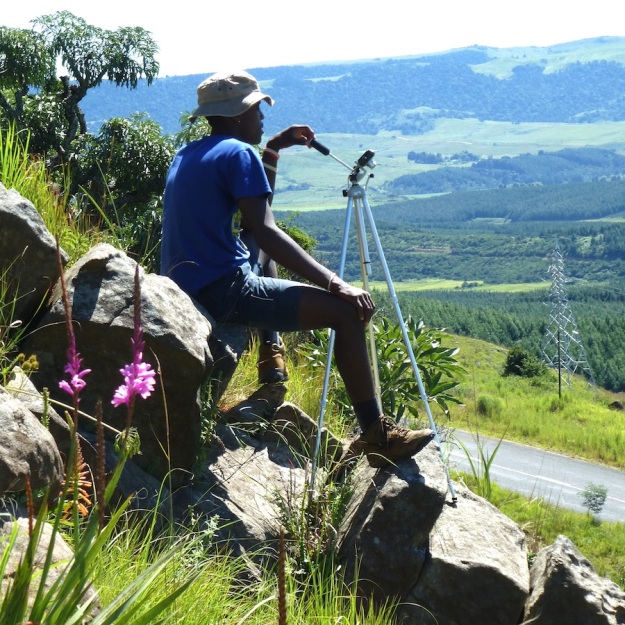
I do not know which gave me the most pleasure – being there and seeing the enthusiastic wildflower observers, finding the gems on the grassland hillside, or enjoying this magnificent record of the outing – phew, how wonderful to be able to re-live the very special exprience
LikeLike
What a mega flower observing day! Flower of the day for me … Short tubed drumsticks.
LikeLike
Apart from the amazing photographs and anybody conform the identification Berkheya rhapontica. I wondered if it was B. echinacae
LikeLike
Just so the search engines can find it Zalunzianskya microsiphon should read Zaluzianskya microsiphon, that is not Zalunz… buth rather. Zaluz.. (No not sharp eye but dumb search engine in Red Data List.)
LikeLike
Thank you Peter.
LikeLike
Amazing day out, pity that I had missed it 😦 Congratulations Nikki on upkeeping the blog and for taking the time with the movie. Looking forward to it.
LikeLike
Pingback: Boston Wildlife Sightings for February | Midlands Conservancies Forum
Interesting to me was that the Indigofera hedyantha (https://midlandsconservanciesforum.files.wordpress.com/2014/02/indigofera-heyantha-cgrant.jpg) by Christeen Grant was identified by Charles Stirton as Indigofera dregeana in my posting on iSpot at http://www.ispot.org.za/node/239941. This will be the first decent picture of this species on the net. Also it is not in Pooley or any other other popular guides.
LikeLike
That certainly is interesting, Peter. I will edit the blog post to reflect both names and put the link to your iSpot reference. Isn’t it fascinating how often information and plants photographed by us humble midlands amateur botanists come up on searches? Really exciting actually to be contributing to freely available knowledge.
LikeLike
Pingback: Walking – Plant Abundance